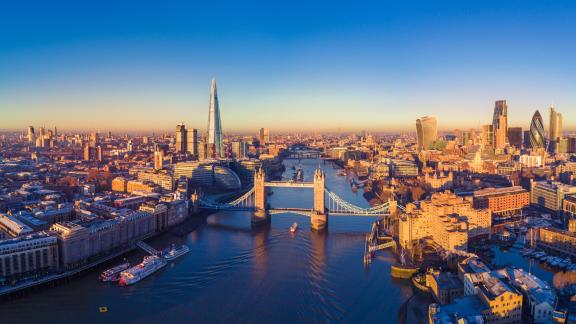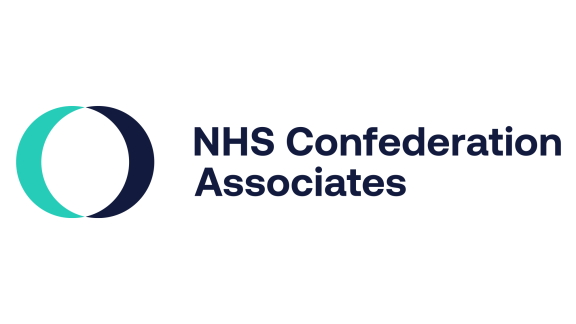Summer Statement 2020: member briefing

Introduction
The unprecedented spending pledges announced at and since the 11 March Budget temporarily froze the economy and helped the NHS successfully avert being overwhelmed. Four months on from Chancellor of the Exchequer Rishi Sunak delivering his first Budget, the UK finds itself past the COVID-19 peak, but still in unchartered waters.
The lockdown is now easing, but with the virus still in general circulation, the Chancellor’s Summer Statement announced yesterday (8 July 2020) focused on measures aimed at protecting jobs and rejuvenating the UK economy. Less elaborated on by the Chancellor in the House of Commons were fresh spending pledges on equipping the NHS to deal with both its large treatment backlog and the real possibility of a second peak of the virus.
However, HM Treasury’s Plan for Jobs does outline £31.9 billion of support for health services. This funding confirmed the investment required and allocated to date to tackle COVID-19. The funding includes over £15 billion for the procurement of personal protective equipment (PPE), £10 billion for the government’s Test, Trace, Contain and Enable programme, over £1 billion to procure additional ventilators to support the NHS, and £5.5 billion of spending on health services.
Key points
The main spending announcements from the Summer Statement relating to the health and social care sectors:
- The Chancellor confirmed that a total of £31.9 billion of support has so far been allocated for health services in response to COVID-19:
- Over £15 billion for PPE procurement this year to protect frontline staff.
- £10 billion for the government’s Test, Trace, Contain and Enable programme.
- £1 billion towards the procurement of additional ventilators.
- A further £5.5 billion of general spending on health services. This includes spending towards the use of independent sector facilities; enhancing the NHS discharge process; delivering medicines to those who are vulnerable and shielding; keeping pharmacies and GP practices open during bank holidays; and funding for domestic vaccines research, development and manufacturing.
- There was confirmation that the government has provided £4.7 billion of funding for local government, including £3.7 billion to support local authorities’ responsibilities in social care during the pandemic. In addition, £1.2 billion has been provided for other public services, including the provision of food packages for shielders.
- The Chancellor announced the following measures to accelerate investment:
- £1.05 billion in 2020-21 towards investing in ‘NHS critical maintenance and A&E capacity across England.’
- Up to £250 million in 2020-21 to progress the replacement of outdated mental health dormitories with 1,300 single bedrooms across 25 mental health providers in England.
- An additional £200 million for the Health Infrastructure Plan to ‘accelerate’ a number of the 40 new hospital building projects across England.
- Other commitments included:
- A Public Sector Decarbonisation Scheme with £1 billion over the next year to be offered as grants to public sector bodies, including hospitals, to fund both energy efficiency and low carbon heat upgrades.
- £300 million investment on equipment and infrastructure across universities and institutes across the UK during 2020-21.
- £313 million to support international efforts to develop vaccines, therapeutics and diagnostics, including £250 million towards the Coalition for Epidemic Preparedness Innovations, £40 million on therapeutics, and £23 million on diagnostics.
Political context - A marathon not a sprint
The COVID-19 outbreak has presented extraordinary challenges and changed the NHS and social care through rapid transformation. It has also brought about unprecedented action from the Treasury. Yesterday’s economic update or ‘Plan for Jobs’ was not in any fiscal calendar a few weeks ago – never mind a few months. The update follows a full Budget in March and significant and active Treasury measures throughout the pandemic via furlough schemes and loan guarantees.
There will also be Comprehensive Spending Review and Autumn Statement in the coming months. In addition, yesterday’s update may not be the last. COVID-19 may well require further fiscal activism and interventions to be peppered as it takes it course. After all, the ‘new normal’ is rapidly evolving month by month, which makes the mitigating actions required to meet the challenges of COVID-19 difficult to predict. How we tackle the pandemic and the government’s response to it will be a marathon not a sprint, with interventions dotted along its course.
Support for the NHS has evolved too, with £6 billion in new funding over the course of this parliament and £5 billion of emergency funding for public services announced in the March Budget. Last month, an economic plan to ‘build, build, build’ was announced, including £1.5 billion to be allocated to hospital maintenance. In the summer statement, as reflected in the key points below, the Chancellor confirmed that £31.9 billion of support has been allocated for health services so far in response to COVID-19, which has been spent on PPE, Test and Trace and the use of independent sector health facilities.
These figures would appear to be in a different ballpark to what the sector has grown used to. But the challenges facing the sector while it attempts to restore services over the next few months through winter pressures and a potential second peak are unprecedented. Indeed, the funding announced in the summer statement is a sign of the challenges to come and need to be built on.
The government will need to build on yesterday and follow through on the mantra ‘build back better’ in fiscal events to come later this year, particularly on social care. COVID-19 has demonstrated that you cannot fix the NHS if you do not fix social care. The government will need to reset its ambitions for what the health and care system of the future should look like. Failure to move beyond yesterday’s announcements would see the prospect of embedding the rapid transformation of health and care over the past few months lost.
What the statement means for the NHS
In line with the Chancellor’s pledge to provide the NHS and other public services with the support it has needed to respond to COVID-19, the Treasury has stated that it has so far approved £48.5 billion of additional expenditure on public services.
This £48.5 billion has included £31.9 billion of support for health services. Further breaking down this latter figure, £15 billion has been allocated for PPE procurement. In addition, the Treasury has approved £10 billion for the government’s Test, Trace, Contain and Enable programme to allow for the ‘unlocking of the economy.’ Putting this figure of £10 billion into perspective, it has been pointed out that the entire operating budget of Public Health England is approximately £0.4 billion. The Treasury also announced over £1 billion to procure additional ventilators to support the NHS.
Finally, £5.5 billion of general spending on health services includes spending towards: the use of independent sector spending facilities; enhancing the NHS discharge process so that patients who are medically fit to be discharged can leave hospital safely and more quickly; delivering medicines to those shielding from the virus who are listed as vulnerable; keeping pharmacies and GP practices open during bank holidays so that healthcare facilities can stay available to those in need of them; and funding for domestic vaccines research and development, and manufacturing.
In terms of investment in 2020-21, the Treasury is providing £1.05 billion to invest in ‘NHS critical maintenance and A&E capacity’ across England. Towards the ambition of ‘modernising the NHS mental health estate,‘ the Treasury is providing a maximum of £250 million for the Health Infrastructure Plan (published by the Department of Health and Social Care in September 2019) to accelerate a number of the 40 new hospital building projects across England.
In addition to spending towards certain UK-wide health services, the Treasury is providing the devolved administrations with a further £4.1 billion. This additional funding includes £2.1 billion for the Scottish Government, £1.3 billion for the Welsh Government, and £0.7 billion for the Northern Ireland Executive.
With regard to spending on other public services with an impact on the NHS, the Treasury has approved £4.7 billion of funding to local government, including £3.7 billion to support local authorities to manage increased pressure on social care services. The £4.7 billion of funding for local government also includes £600 million of additional funding to support infection control in care homes.
Internationally, the government is contributing towards global efforts to develop vaccines, therapeutics, and diagnostics, including £250 million towards the Coalition for Epidemic Preparedness Innovations, £40 million on therapeutics, and £23 million on diagnostics.
While the scale of spending to tackle COVID-19 so far reflects the pressures faced by the system to date and the challenges ahead, the statement did little to expand upon what has already been committed and many areas desperately in need of investment were not touched upon. If the government is to ‘build back better’ then it will need to be a lot more ambitious in the coming months. Much of this could be clarified in the Phase 3 guidance. This notwithstanding, we are still awaiting confirmation of how the social care sector will be supported through this period and beyond, and we can expect further clarification on this from the government in a separate social care announcement later this year.
NHS Confederation viewpoint
The extra support for the NHS is welcome, but we need more detail about the plans, not least as patient services restart and we look ahead to what is certain to be a very difficult winter.
The amounts spent on PPE, Test and Trace and additional ventilators show the scale of what has been required thus far. But there are gaps. Primary care, for example, has had no confirmation of funding for any COVID-19-related spending in the last four months.
Looking forward, we must have a detailed funding plan.
Firstly, while we welcome the £1.05bn to invest in critical maintenance in NHS and A&E capacity and the £250m to eradicate outdated mental health dormitories, we need an urgent injection of capital in areas where significant changes will need to be made to wards and other infrastructure as services are remodelled to deal with the ongoing impact of coronavirus.
Secondly, we need an extension of emergency funding across the NHS, given significant extra demand.
Thirdly, investment will be needed over the longer term to support rehabilitation and recovery services in the community, where patients recovering from the virus will need ongoing support.
Fourthly, if we are to start tackling the backlog of treatment, we need to extend the deal with the private sector.
Lastly, the NHS and care services will need political and public patience – this will have to be a time of realistic expectations as the service struggles to its feet with the threat of the virus still very much a part of daily life across frontline services.



